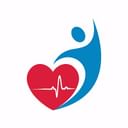Coronary Artery Blockage
Symptoms and diagnosis of Coronary Artery Blockage
Hello everybody. This is Dr. Rohit Sane, medical Director, Madhavbaug. I've done my MBBS, I've done my fellowship in Cardiac Rehabitilation from Apollo Hospital. Today we'll be talking about the blockages in the coronary artery and the fate of these blockages in the coronary artery.
Many a times we're afraid by only the term Blockages. We need to understand the science of the whole disorder as such so as to treat it on good terms. Now what can a blockage do in my coronary artery, is a simple question. This blockage can either give me symptoms of chest pain or else the second symptom a blockage can give, a blockage patient can present with is breathlessness on exertion. So one is chest pain and other is breathlessness on exertion. Now, we need to know exactly what this blockage is affecting our heart muscles by, whether it's reducing down the blood supply and resulting into my angina or else chest pain or whether it has reduced down the efficiency of my cardiac muscles and leading to breathlessness on exertion.
To diagnose this what are we supposed to do after an angiography has been done is a very simple test called as the stress test. From a stress test we need to identify whether these blockages has lead to two different disorders, which of them has been started in our body is needed to be understood by a simple stress test. Now, these two disorders, one is angina which is a systemic heart disease and second is breathlessness on exertion called as chronic heart failure.
Now when we conduct a stress test you just need to walk about 9 minutes in a Bruss's protocol or else 15mins on a modified Bruss's protocol on a treadmill while the ECG is monitored by the doctor. When you walk on this treadmill for a specified protocol, for a specified duration of time, the ECG is monitored for ECG changes. If at all while walking you feel chest pain ir ECG changes that means the blockages are creating some problems with the blood supply to your heart muscle. But many a times you walk on the treadmill without getting chest pain, without getting ECG changes but at the same time while walking you feel a different type of symptoms called as breathlessness as you walk.
Consider you should be able to walk for 15mins in the treadmill and maybe after 9th minute you start feeling breathless on the treadmill and we've to stop it because of your breathlessness, then what do we infer from this is that your blockages are leading to a disease condition called as chronic heart failure, where in your heart muscle is not able to pump so as to commensurate with the requirement of your body. Hence, only diagnosing a blockage is not a complete diagnosis. Once a coronary angiography has been done and you've been diagnosed with blockages, the next thing that is needed to be done is to perform a normal exercise tolerance test by which you come to know what is the exact fate of these blockages. These blockages as I said earlier can either lead to angina or can lead to chronic heart failure which represents as breathlessness due to exertion. So, as soon as we conduct the stress test the right type of treatment whether on chronic heart failure or whether on systemic heart disease can be performed as to relieve you out of your symptoms.
So, for more information log onto Lybrate. Thank you.


+1.svg)
